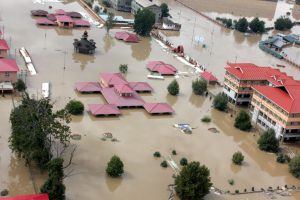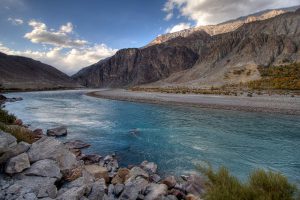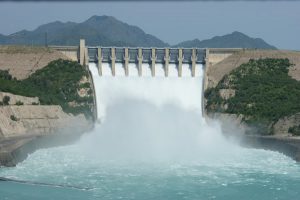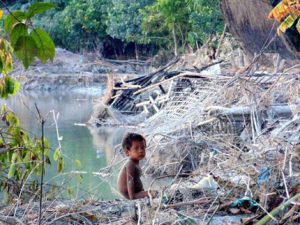Pakistan has experienced floods every year since 2010. This has caused heavy losses for people and the country’s economy. The 2010 mega-flood inundated one fifth of the country, killed over 1,600 people and caused over US$10 billion in damages. Experts blame the government’s weak water management policies and poor flood control systems. They also point to the country’s lack of water storage facilities, which means floodwater is wasted every year.
Pakistan’s media have taken a different stance: reports in major newspapers have alleged that current floods in Pakistan – which have left swathes of the country under water and displaced thousands of people – have been worsened because Indian authorities opened the gates of the Baglihar dam on the Chenab river in the Indus basin. However, the Pakistan Meteorological Department has refuted claims stating clearly that floods were due to heavy rainfall, not the actions of India upstream.
So where did these claims come from? Umar Asghar from the Daily Express argues anti India news boosts ratings and readership numbers. Majid Siddiqui, a senior journalist and executive producer at the TV channel Abbtak, says the Indian media uses similar tactics in its anti-Pakistan rhetoric. Politics, extremism and terrorism make headlines, he adds, while issues like water resources are not often discussed in the media.
Afia Salam, senior journalist and media analyst argues historical tensions between India and Pakistan play a big role: “We have to look at the historic anti-Indian sentiment in Punjab and the tale of handing over three rivers to India under the Indus Water Treaty. What’s worse is that journalists talk to politicians instead of experts,” Salam said.
Pakistan perception
In Pakistan perception India is responsible for flooding downstream is widespread, although experts disagree. Claims current floods were due to India opening the gates of the Baglihar dam on the Chenab are untrue, says Mr Arshad Abbasi, a water expert and advisor for Water and Energy in Sustainable Policy Institute (SDPI). However, India’s construction of the dam – along with a number of other dams – does violate the Indus Water Treaty, he added. Under the treaty, signed by both countries in 1960, Pakistan holds the right to the water of the three western rivers in the Indus basin (the Indus, Jhelum and Chenab) and the rights to the eastern rivers belong to India. India argues the dams are run-of-the-river facilities and fall within their rights under the treaty.
But what is Pakistan doing to protect itself from floods by managing its own rivers? “We are simply doing nothing”, said Abbasi. “ We neither build new dams, nor can we stop the Indian violations. People holding important posts are totally unaware about the dangers Pakistan is facing due to climate change. We have witnessed heavy rains across the country in a relatively short period. Although we need to be on high alert, we do nothing except make plans on paper.
Dr. Parvez Amir, water expert and former member of the Prime Minister’s Task Force on Climate Change, agrees, “The danger of climatic change is imminent. It cannot be evaded by burying our heads in the sand and placing all the blame on India is no solution either.”
Pakistan’s approach to the water crisis
Pakistan and India have taken drastically different approaches to managing their water resources. Pakistan has not built any water reservoirs since the Tarbela and Mangla dams were built in the 1960s and 70s. Meanwhile, India has built hundreds of dams, reservoirs and barrages to provide water to its desert areas over the past four decades. As a result, India has the capacity to store enough water for 100-120 days, while Pakistan can only store 25-days worth of water, says Amir.
Pakistan urgently needs to build more water storage to reduce the impact of flooding and save water to use during periods of drought. “We have nine sites on the River Indus which we can use to store water,” Amir pointed out. “This water was enough to store and fill eight dams the size of Tarbela [which holds 14.3 km3 of water]. Even if we cannot construct big dams, we could have increased the storage capacity by making barrages and big lakes to save water.”
Pakistan is one of the most vulnerable countries in the world to climate change. The devastating 2010 floods affected almost 20 million people – more people than the 2004 Indian Ocean tsunami, the 2005 Kashmir earthquake and the Haiti earthquake combined, according to the UN.
![<p>Pakistan is one of the world’s countries most vulnerable to the impacts of climate change [image by Asian Development Bank]</p>](https://dialogue.earth/content/uploads/2016/03/Floods-Pakistan-ADB-300x199.jpg)








